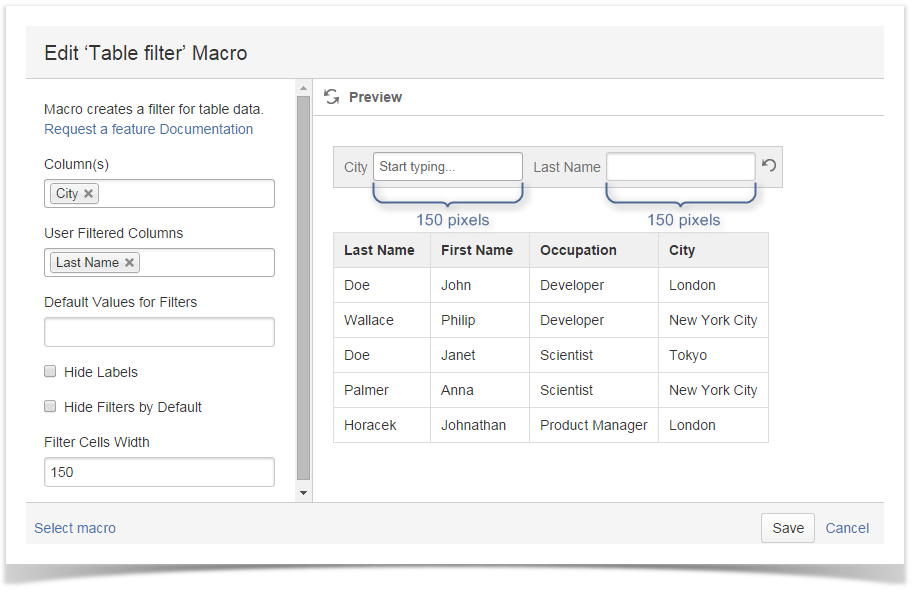This page explains
To filter a table, enter the Edit mode, find Table Filter in the Insert - Other Macros menu and insert it to the page. Then either copy and paste an already existing table or create a new table inside the macro.
To specify filtering parameters in the macro browser, click inside the macro and choose Edit in the appeared menu.
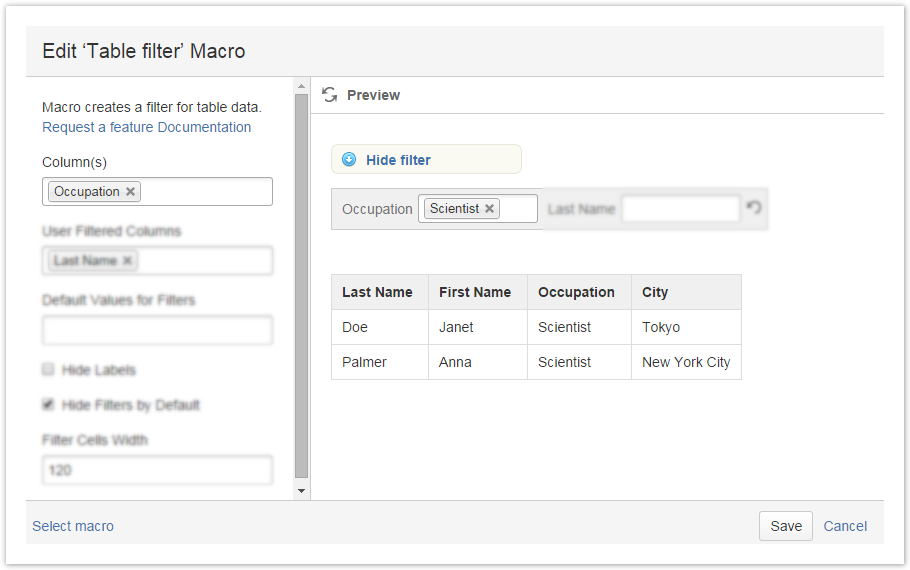
![]()
To add a drop-down list of values, enter table headers in the Column(s) field or choose them from the list.
To filter two or more tables, place them inside the Table Filter macro. The tables should contain identical columns to be filtered.
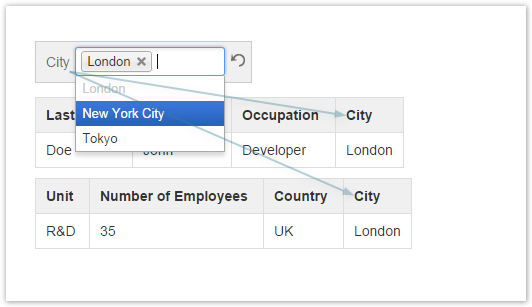
To add a textbox filter, enter the table header(s) in the User Filtered Columns field or choose them from the list.
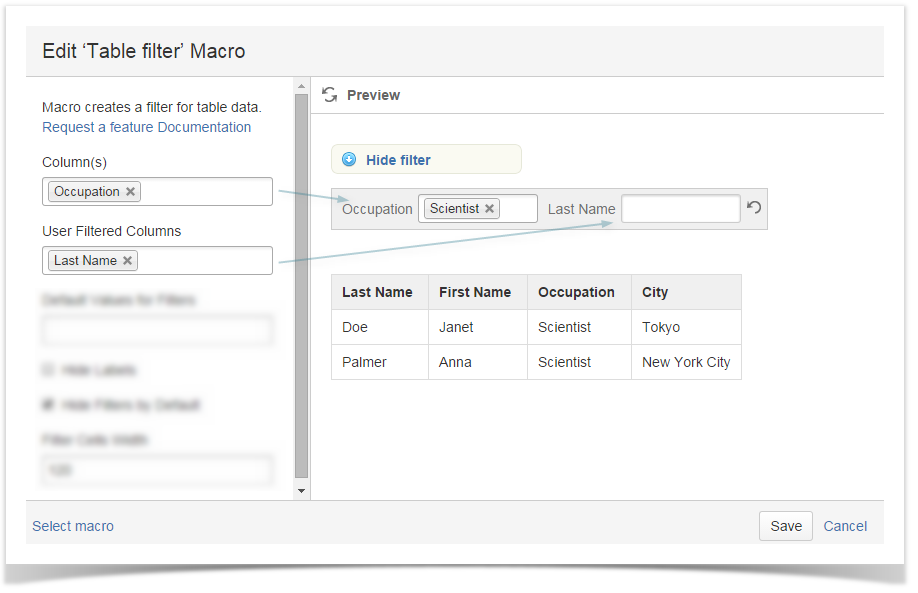
![]()
You can use regular expressions when using textbox filters. For example, the value Developer|Scientist will show all table rows containing Developer or Scientist entries. The full list of regular expressions is available here.![]()
To set your filter to some default value, enter it in the field Default Values for Filters. If you want to specify a default value for other than the first field (e.g. City in the screen shot below), put comma-separated blank spaces for each field preceding it.

To filter tables produced by the JIRA Issues and Taks Report add-ons, put these macros inside the Table Filter macro.
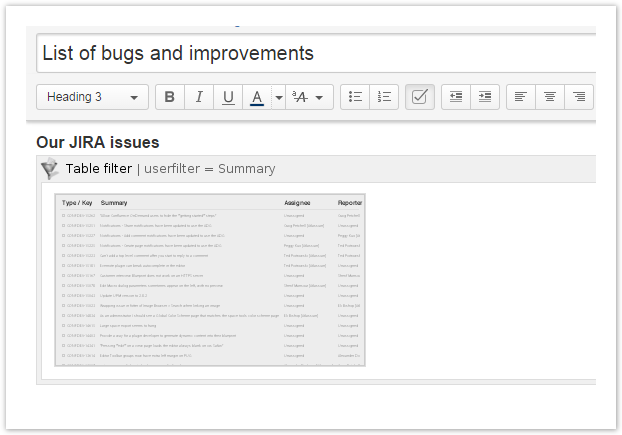
Set filters and use Table Filter as with an normal table.
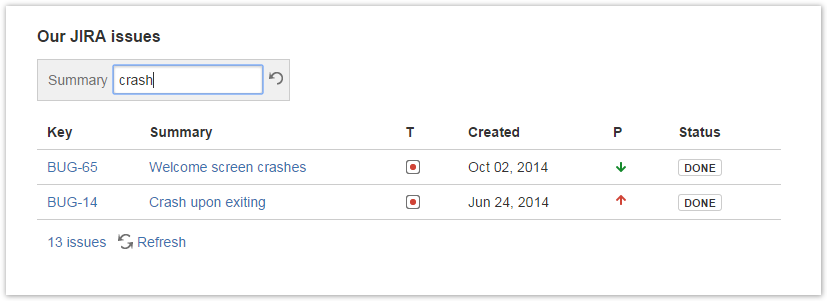
You can remove filter names from the Confluence page by selecting Hide Labels checkbox.
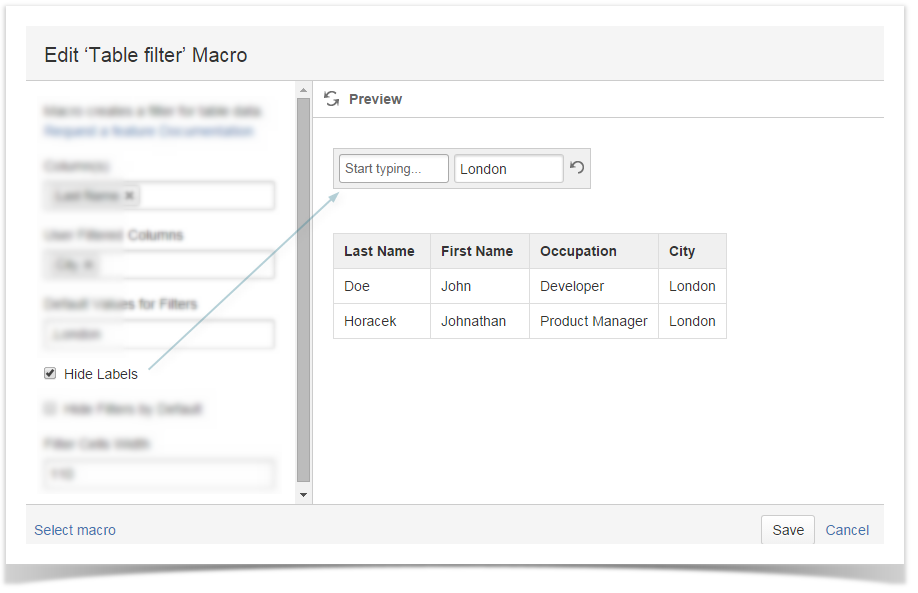
Selecting the checkbox Hide Filters by Default will add the Show/Hide filter switch to the page, so that every user could control the filter pane in the View mode.
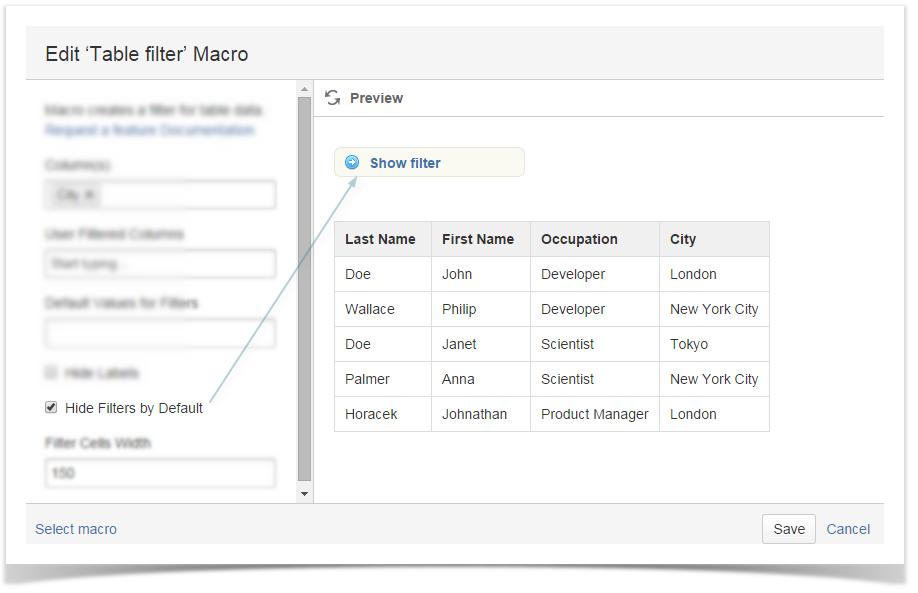
Enter a filter field width in pixels in Filter Cells Width.
